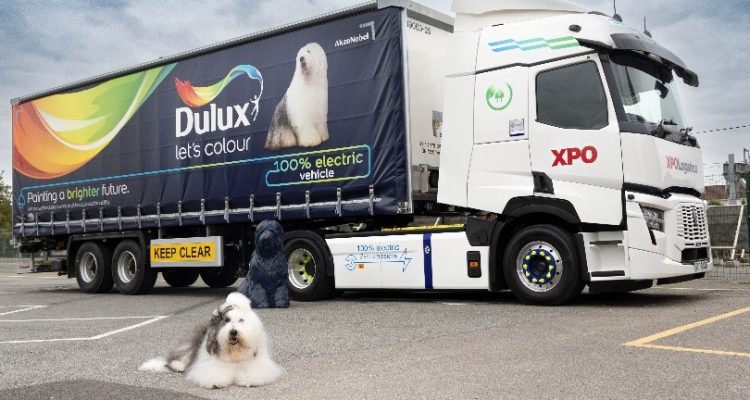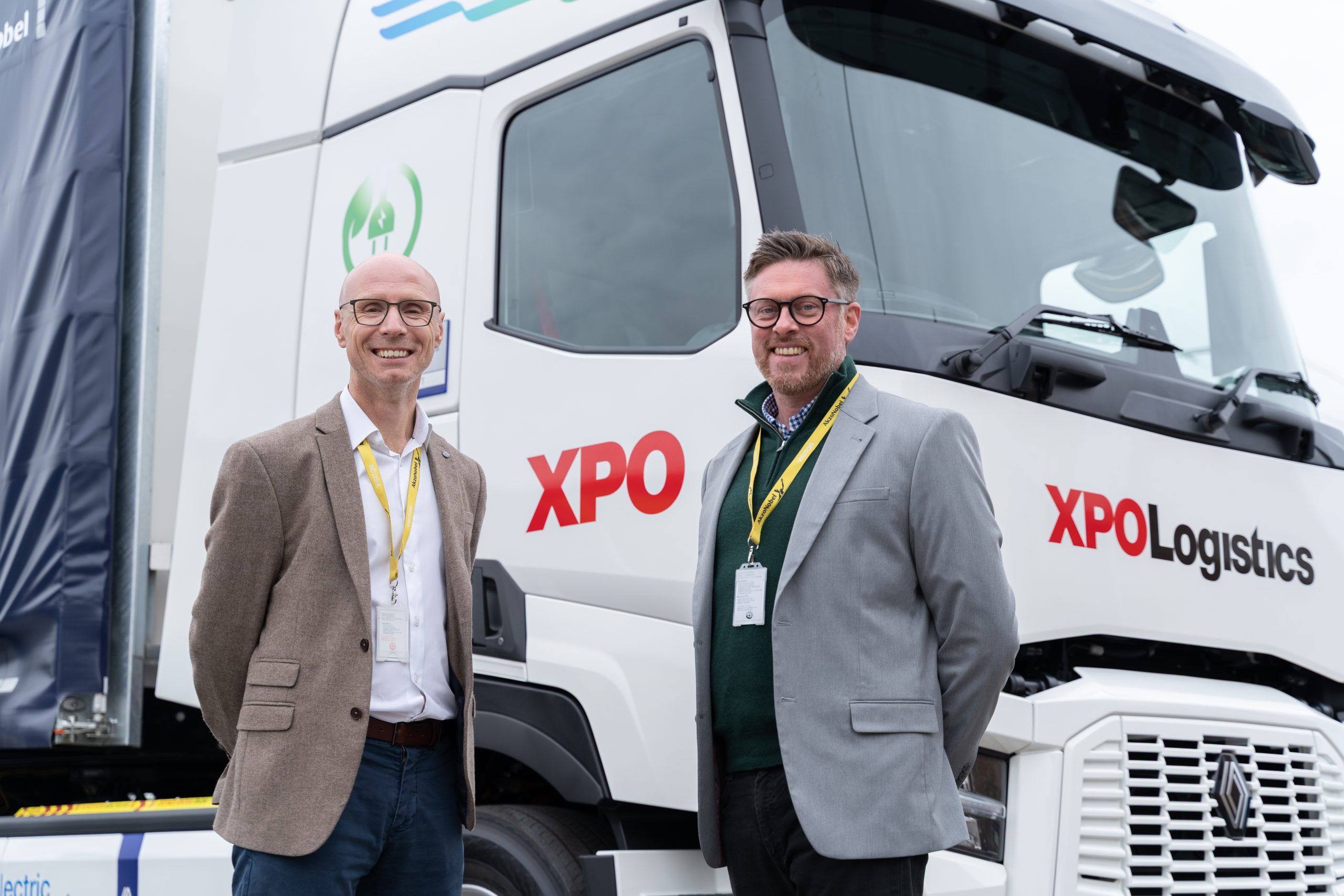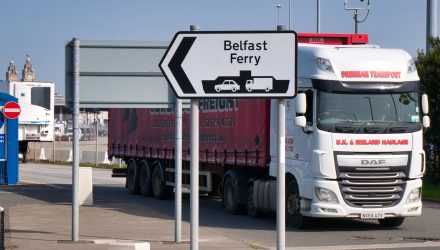AkzoNobel has announced the deployment of its first 100% electric trucks and urban trailer fleet together with a nationwide hydrotreated vegetable oil (HVO) powered fleet in partnership with XPO Logistics. The initiative will cut the company’s transport emissions by over 50% and save approximately 3,000 tonnes of carbon emissions annually, directly supporting AkzoNobel’s SBTi to reduce Scope 1 emissions by 50% by 2030, against a 2018 baseline.
Measurable environmental impact
In this landmark move, AkzoNobel will become the first paint brand in the UK to deploy large-scale electric heavy goods vehicles (eHGVs) under the government’s ZEHID programme. The transformation will deliver annual carbon savings in three key areas:
- Vehicle efficiency improvements: 300 tonnes CO2 reduction
- Euro 6 engines and electric vehicles: 700 tonnes CO2 reduction
- HVO fuel adoption: 2,000 tonnes CO2 reduction
These combined savings of 3,000 tonnes annually equate to removing more than 650 average passenger cars from UK roads for a year*.
Dual-fuel strategy targets urban and nationwide operations
Two fully electric trucks will operate from AkzoNobel’s Slough site to serve London and the surrounding areas. These vehicles will deliver a 100% reduction in direct CO2 emissions while in operation and contribute to lower noise and air pollution. Complementing this, the HVO-powered fleet will operate nationwide, ensuring significant reductions in carbon footprint across both long and short-haul journeys.
The fleet investment is the latest milestone in AkzoNobel’s Paint the Future initiative, which places sustainability-driven innovation as a key pillar of the business. Building on existing progress, with 100% of purchased electricity used in its UK own operations throughout 2024 being renewable and achieving a 41% reduction in scope 1 carbon emissions that same year, this step demonstrates how AkzoNobel is delivering on its commitment to a more sustainable future.
What’s more, the fleets will deliver new cutting-edge low-emission products, including 99.9% VOC-free Dulux Easycare and Dulux Walls & Ceilings alongside improved water-based Dulux One Coat Satin, helping customers to improve their environmental credentials too.
Kathryn Ledson, MD Decorative Paints UKI at AkzoNobel comments: “The launch of our new electric and HVO-powered fleets is a proud milestone in our sustainability journey. At AkzoNobel, we are committed to painting the future by taking bold forward-thinking action – not only though the innovative and sustainable products we create for our customers, but also through how we function as a business. This investment is a clear demonstration of how we are delivering on our science-based targets and taking responsibility for our impact. The announcement builds on our strong history of embedding sustainability at the heart of our operations, product portfolio and partnerships”.
AkzoNobel’s fleet changes are being delivered in partnership with XPO Logistics, a leading provider of innovative and sustainable end-to-end logistics across Europe. XPO is at the forefront of decarbonising freight, offering advanced multimodal transport solutions and expertise in alternative energies to help customers build more sustainable supply chains. Their proven track record in sustainable logistics makes them an ideal partner for AkzoNobel as it transforms its transport operations to cut emissions and support their journey to net zero.
Dan Myers, Managing Director – UK and Ireland, XPO Logistics, comments: “AkzoNobel and XPO Logistics are united by a belief that real progress is built on action, not aspiration. By delivering measurable, large-scale emissions reductions through our logistics partnership, we’re turning shared values into shared results.”
*CO2 saved calculation as follows:
- To create the statement, this reduction in carbon emissions equates to taking more than 650 cars off UK roads for a year. We converted the 3,000 tonnes of CO2 savings into everyday equivalents.
- The average UK passenger vehicle emits 4.6 tonnes of CO2 every year. We therefore divided 3,000 by 4.6 to prove that it was equivalent to taking more than 650 cars off UK roads.







